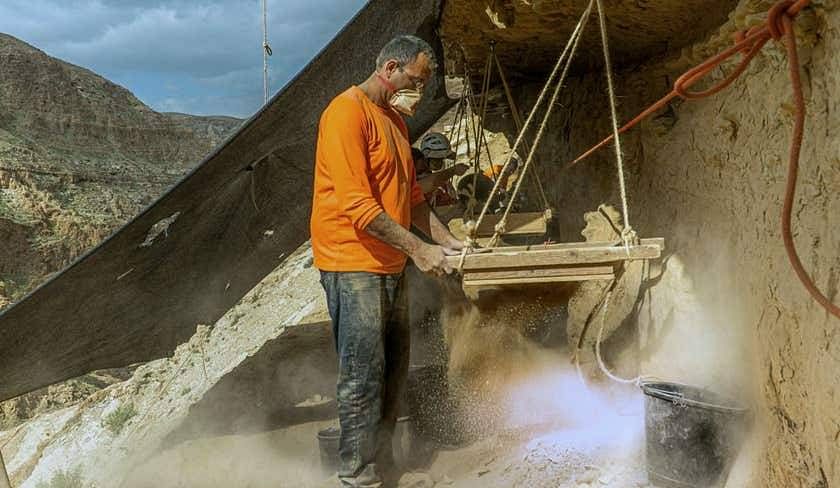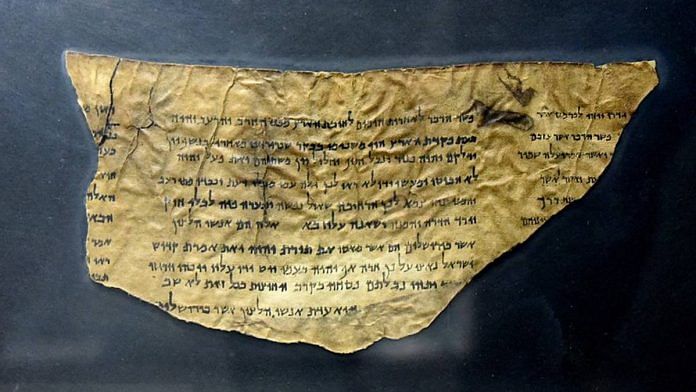Bengaluru: Israeli archaeologists have announced the discovery of dozens of new parchments of the Dead Sea scrolls in a desert cave. The fragments of scrolls are believed to have been hidden here during a Jewish revolt, called the Bar Kochba Revolt, against the Roman Empire nearly 2,000 years ago. These are the first scrolls to be found in over 60 years.
First discovered in the 1940s, the Dead Sea Scrolls are thought to be the second oldest surviving manuscripts of the Hebrew Bible. They are of religious, cultural, historic, and linguistic significance.
The latest scrolls discovered contain lines of Greek text from the Hebrew Bible and are dated to the 3rd century BCE to 1st century CE based on the style of writing. The desert cave is located in a remote area about 40km south of Jerusalem within which 40 human skeletons were discovered in the 1960s, leading it to being called the ‘Cave of Horror’.
The cave is part of over 500 caves that have been under investigation since 2016 by the Israel Antiquities Authority in an attempt to recover ancient artefacts before possible plundering in the future. Many scrolls not officially discovered are regularly found in the black market, which is what prompted the official survey.
The agency held a news conference Tuesday where the discovery of the 80 new pieces was announced. Along with the pieces of parchment, the authorities also announced multiple other discoveries, including a 10,000-year-old woven basket, a 6,000-year-old mummified skeleton of a child, Roman era footwear and bronze coins that were seemingly affected by armed conflict and struck by arrowheads. The failed Bar Kochba uprising is believed to have taken place between 132 CE and 136 CE.

Referring to variations in the text between the recovered Greek text and the translation of Hebrew Bible into Greek dating to the the second and third centuries BCE, Oren Ableman, a Dead Sea Scroll researcher with the Israel Antiquities Authority, said, “We found a textual difference that has no parallel with any other manuscript, either in Hebrew or in Greek.”
“When we think about the biblical text, we think about something very static. It wasn’t static. There are slight differences and some of those differences are important,” said Joe Uziel, head of the antiquities authority’s Dead Sea Scrolls unit.
Speaking about how the Biblical text evolved to its traditional Hebrew form, he said, “Every little piece of information that we can add, we can understand a little bit better.”
Also read: In Jerusalem, I saw a reflection of Ayodhya
What are the Dead Sea Scrolls
Also called the Qumran Caves Scrolls, the artefacts were first recovered on the northern shore of the Dead Sea. The region is a part of the West Bank, a landlocked area bordered by Jordan and Israel, which since 1967 has been under Israeli occupation and consists of over 150 Palestinian Territories.
Thousands of small, damaged fragments of writing have been discovered along with a few well-preserved manuscripts. Most well-preserved pieces of parchment (vellum) and papyrus have been recovered from 11 Qumran caves.
Most of the scrolls contain text in Hebrew while some are also written in Greek and Aramaic. The writing was done with black ink, which was derived from carbon soot from lamps, mixed with honey, oil, vinegar, and water.
According to archaeologists, the scrolls were written by peoples of the ancient Jewish sect Essenes. Most findings were made inside of earthenware vessels that were buried or stored in caves, as was the traditional Jewish custom in the region for sacred religious texts.
(Edited by Manasa Mohan)
Also read: Quran doesn’t tell people to fight any more than Gita, Bible, Torah. Why pick on Muslims



